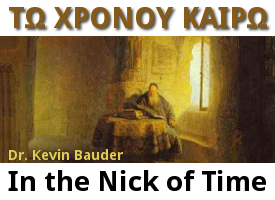People of God: Circumcision Outer and Inner
 Read the series so far.
Read the series so far.
God first commanded circumcision of Abraham in Genesis 17. The rite was to be a token of the covenant that God had made with Abraham (17:11). It was to be applied not only to Abraham and his descendants, but also to servants who were born in his house and slaves he had purchased from foreigners (17:12-13). Any males who were not circumcised were to be cut off from the people as covenant breakers.
Circumcision modified the body as a physical evidence that God had chosen Abraham and his offspring. It was a mark or token of inclusion in the promised nation. In principle, to be circumcised was to claim a share in the promise and to wear the badge of participation as an heir. But paradoxically, the introduction of circumcision also implied that not everyone who received the sign would actually receive the promise. Why? Because at the very time that Abraham was commanded to institute circumcision, he was clearly told that Ishmael would not receive the promise (17:18-21). Nevertheless, Ishmael received circumcision (17:26).
From the very beginning it should have been clear that circumcision was neither an efficacious means to gaining nor an infallible sign of possessing the promise. All those who were heirs of the promise were obligated to receive circumcision, but not all those who received circumcision became heirs of the promise. Though circumcision was a sign or token of inclusion, it was not an infallible sign. Something more was always required.

Discussion